I've been absent from TFL recently, as work and home have eaten up just about every waking minute, and there have been far too many waking minutes in the past couple of months. I could have stood for a tad more sleeping minutes.
Nevertheless, a family has to eat, so I've still been baking. One thing I learned: Don't double the amount of salt in a bread recipe. I did this by accident, doing the math for 2% in my head and adding 20 grams instead of 10 grams. Not even the birds would eat this stuff. Yuck.
I have had some nice loaves come out of the oven, however. Last week, I made the same doubling error as before, but with the starter. I used a 40% innoculation instead of 20% for this largely white flour sourdough (I added 10% whole wheat). All in all, the loaf was fine, though it wasn't as flavorful as I'd have liked. Rose quickly though, and looked beautiful.
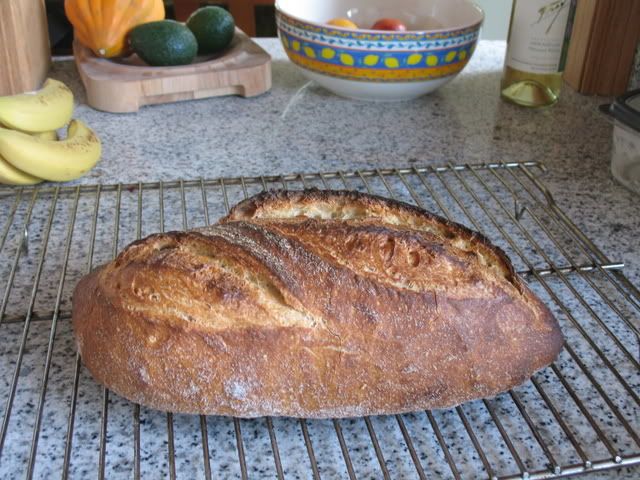
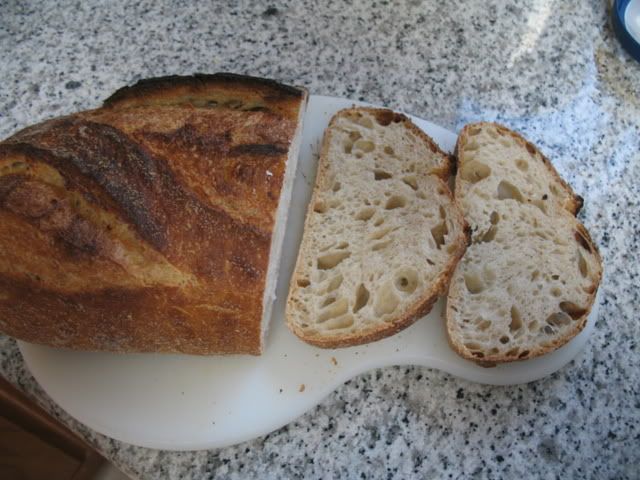
I also revived my rye starter to make a 40-30-30 rye to whole wheat to white flour loaf. I didn't add caraway, and missed it, actually.
Starter is amazingly resiliant stuff. I'd not fed it for months (probably three at least ... maybe even four), and it had acquired a nasty black crust that could have been mold, could have been hoochy gunk (the rye is kept at 100% hydration, but it's still pretty pasty rather than liquid). In any case, it started right back up and made a wonderfully sour rye loaf. The shaped dough stuck a little bit to the baker's linen, so I had to slash it strangely to incorporate the rip and avoid a blown out side. Turned out OK, though, in the end.
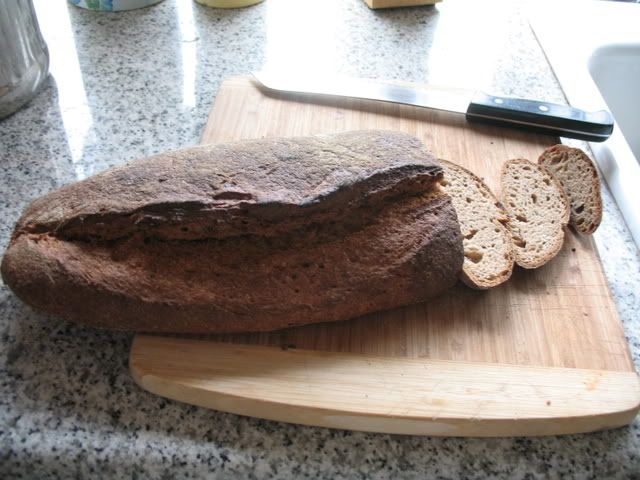
And, of course, I regularly make my standby overnight whole grain sourdough hearth loaf (60% whole wheat, 30% whole spelt, 10% whole rye. The secret to getting a good "grigne" I think is not to proof it too long. Two to two-and-one-half hours seems to be just about right.
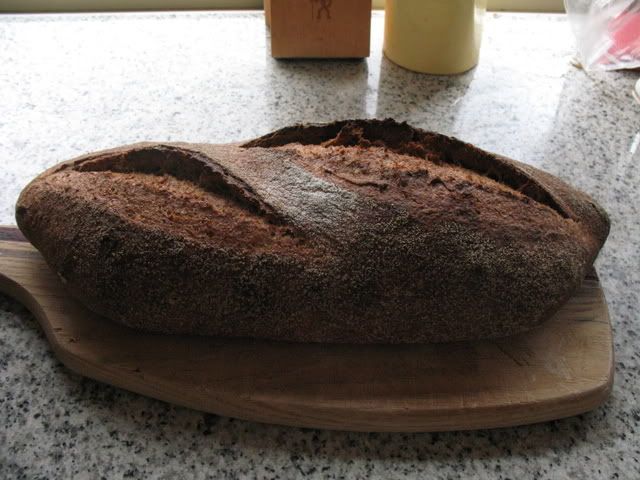
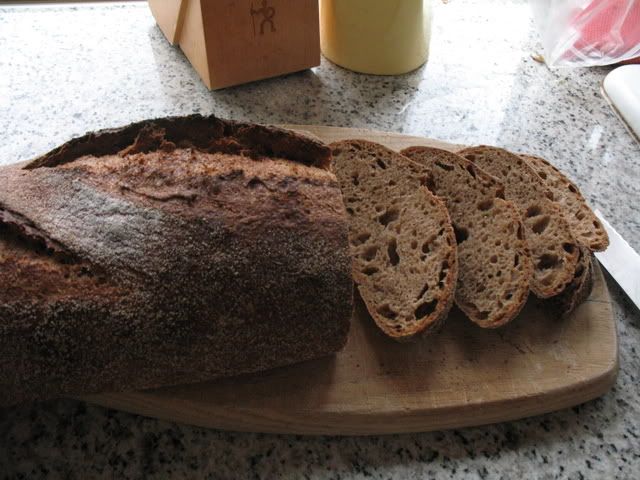
Mmmmmm. Grilled cheese sandwiches on whole grain sourdough hearth bread.
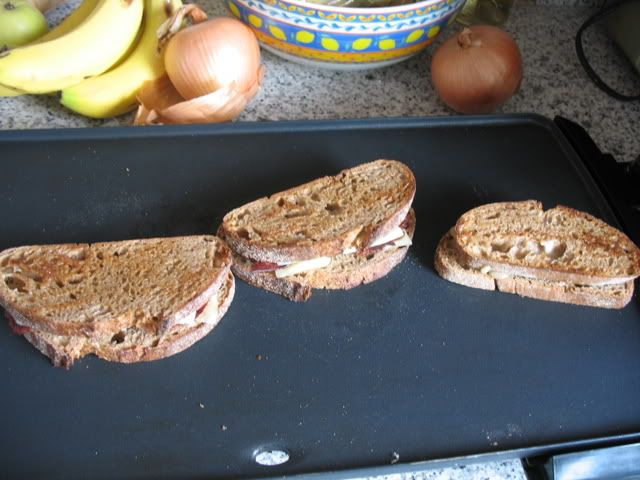
Nevertheless, a family has to eat, so I've still been baking. One thing I learned: Don't double the amount of salt in a bread recipe. I did this by accident, doing the math for 2% in my head and adding 20 grams instead of 10 grams. Not even the birds would eat this stuff. Yuck.
I have had some nice loaves come out of the oven, however. Last week, I made the same doubling error as before, but with the starter. I used a 40% innoculation instead of 20% for this largely white flour sourdough (I added 10% whole wheat). All in all, the loaf was fine, though it wasn't as flavorful as I'd have liked. Rose quickly though, and looked beautiful.


I also revived my rye starter to make a 40-30-30 rye to whole wheat to white flour loaf. I didn't add caraway, and missed it, actually.
Starter is amazingly resiliant stuff. I'd not fed it for months (probably three at least ... maybe even four), and it had acquired a nasty black crust that could have been mold, could have been hoochy gunk (the rye is kept at 100% hydration, but it's still pretty pasty rather than liquid). In any case, it started right back up and made a wonderfully sour rye loaf. The shaped dough stuck a little bit to the baker's linen, so I had to slash it strangely to incorporate the rip and avoid a blown out side. Turned out OK, though, in the end.

And, of course, I regularly make my standby overnight whole grain sourdough hearth loaf (60% whole wheat, 30% whole spelt, 10% whole rye. The secret to getting a good "grigne" I think is not to proof it too long. Two to two-and-one-half hours seems to be just about right.


Mmmmmm. Grilled cheese sandwiches on whole grain sourdough hearth bread.

- JMonkey's Blog
- Log in or register to post comments
You've outdone yourself, again! Thanks for the incentive.
Susan from San Diego
how bad is it that my first comment to Floyd was counter-top envy? We have that super bad plastic/sparkle stuff going on in our kitchen!
The breads look great!
Dstroy, I hear ya..counter envy is a terrible thing..I have tile..yuck!
How did the bread baking class you gave go?
Oh who am I kidding? Something that good is surely gone by now.
Welcome home!